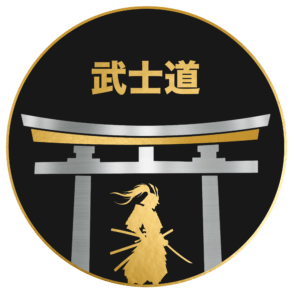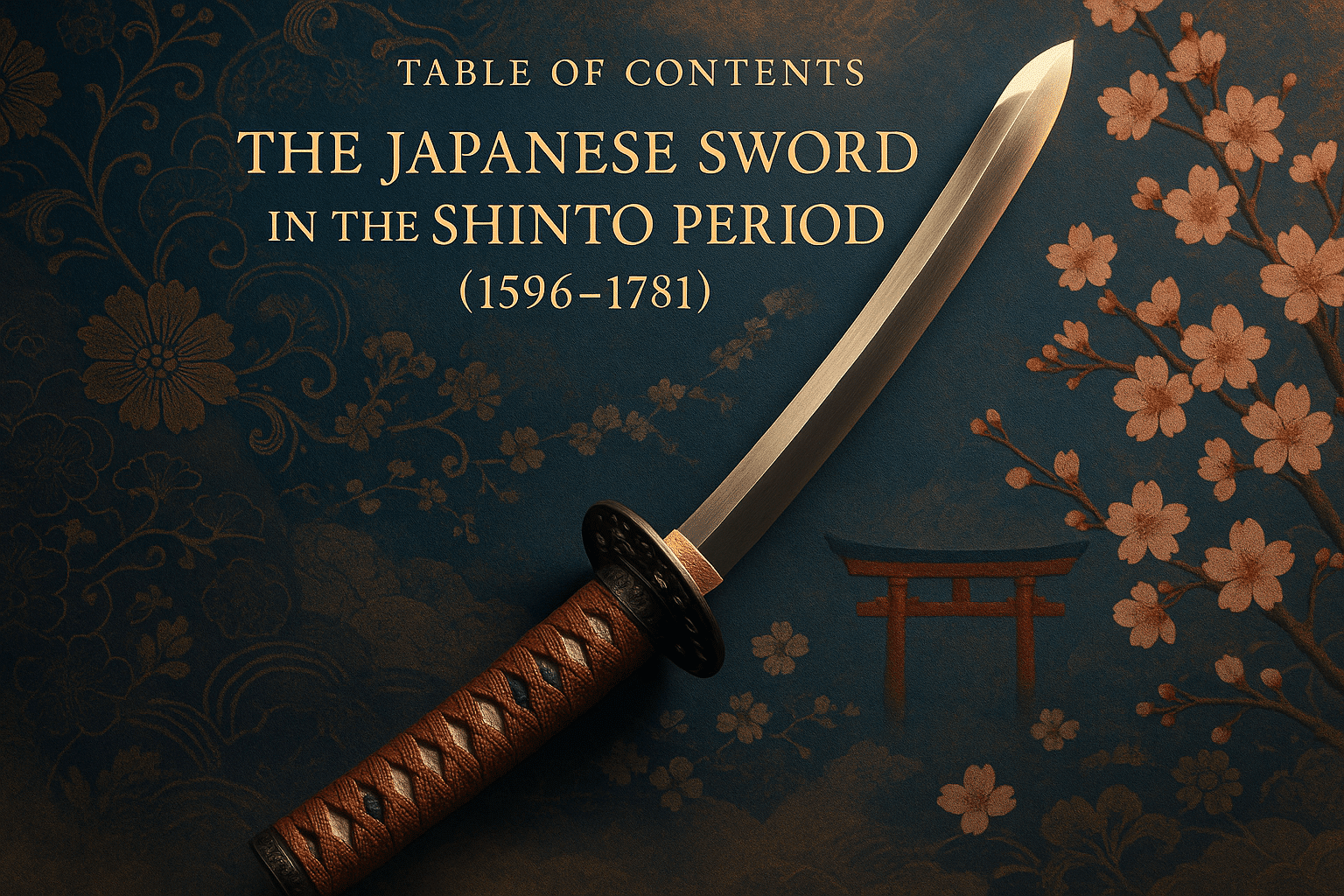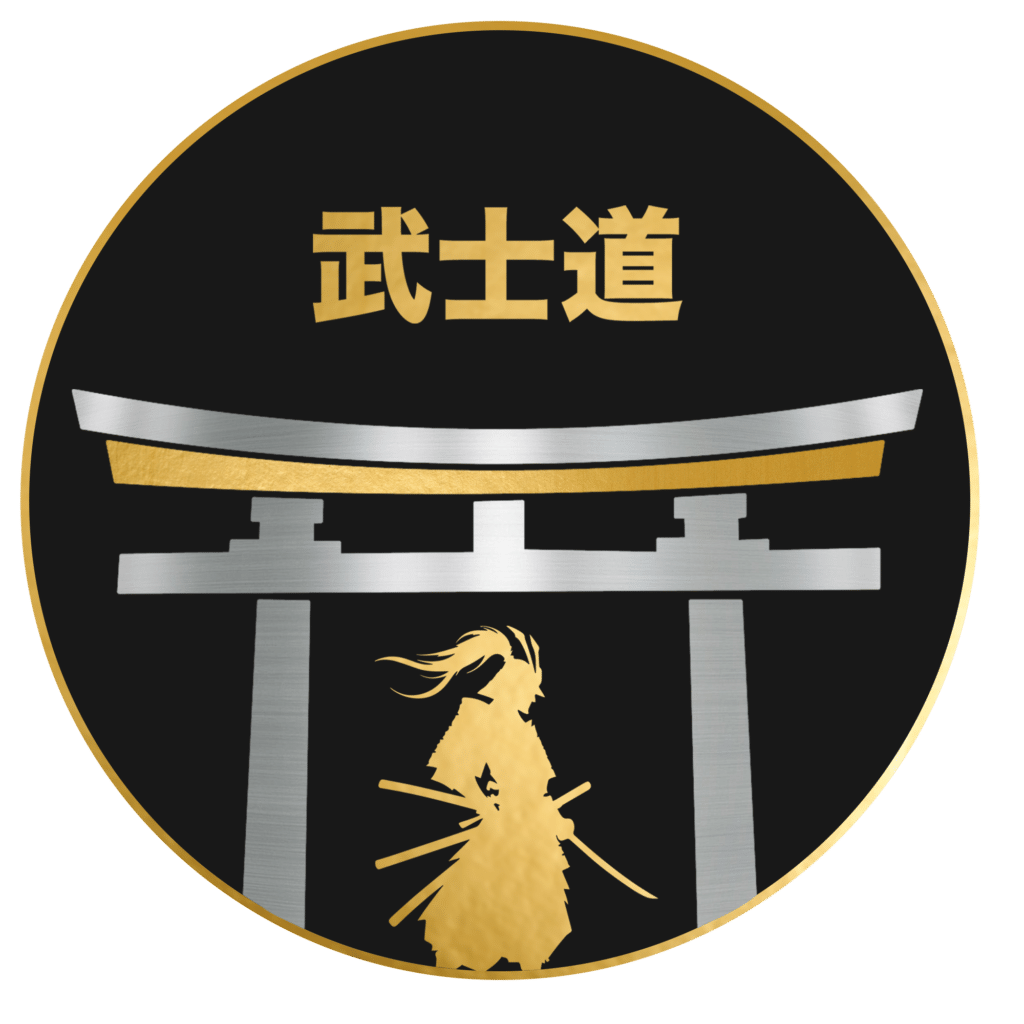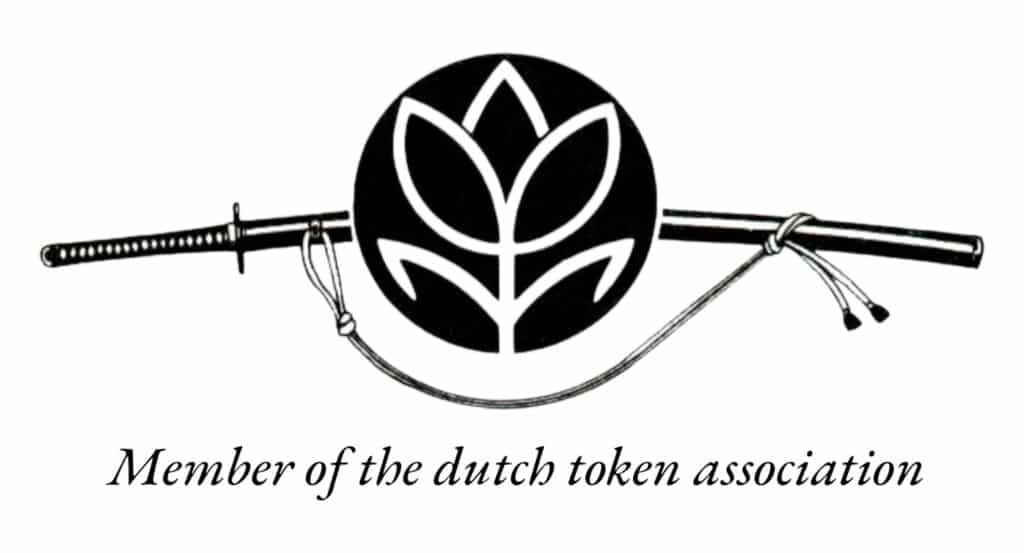Introduction: A New Era of the Blade
After centuries marked by near-constant warfare during Japan’s Kamakura and Muromachi periods, the dawn of the Shinto period (1596–1781) ushered in a transformative era for the Japanese sword. As the nation entered a time of relative peace under the Tokugawa shogunate, the sword evolved beyond its role as a battlefield weapon to become a symbol of social status, personal identity, and refined craftsmanship.
The Shinto period—meaning “new sword”—signaled both a revival and reinvention of sword-making traditions. While swordsmiths continued to honor classical techniques passed down through generations, they also began to embrace innovation, adapting their craft to suit changing societal needs. With fewer battles to fight, the emphasis shifted from purely functional designs to blades that demonstrated superior aesthetic beauty, artistic inspiration, and technical mastery.
This era marks a critical bridge between the revered koto (“old sword”) blades of earlier Japan and the modern interpretations that would follow. As we explore the Shinto period, we gain insight into how the Japanese sword, far from being rendered obsolete by peace, was reimagined as a cultural treasure—an embodiment of discipline, artistry, and heritage.
Historical Context: The Land and Its Shifts
During the Shinto period (1596–1781), the dawn of the peaceful Edo era under Tokugawa rule reshaped Japan’s social and political fabric. After centuries of warfare, the unification of the country brought an end to constant military conflict. Daimyo were brought under centralized control, and the samurai class transitioned from battlefield commanders to bureaucrats and administrators, serving as symbols of order rather than warriors of war.
This shift significantly impacted sword production. No longer forged primarily for combat, swords became emblems of prestige, rank, and cultural refinement. The katana, once an essential battlefield weapon, was now often worn as part of formal dress. Its value lay not only in its sharpness or strength, but in its craftsmanship, aesthetic, and the reputation of the swordsmith.
Swordsmiths of the Shinto period adapted their techniques to this new reality. While still maintaining high technical standards, they focused more on elegant fittings, refined blade shapes, and artistic flourishes that elevated the sword to a work of art. Regional styles also emerged, reflecting the tastes and traditions of different domains.
In essence, as Japan entered an era of peace, the sword was reborn—not just as a tool of war, but as a cultural icon, embodying the honor and identity of the samurai class in a time of profound societal transformation.
Shinto Swords: Defining Characteristics
Shinto swords, forged between 1596 and 1781, stand out as distinct expressions of Japan’s evolving military, social, and aesthetic sensibilities. Unlike the earlier Koto period swords, which were shaped by feudal warfare and regional smithing traditions, Shinto blades reflected the centralized peace under the Tokugawa shogunate, shifting function from battlefield necessity to symbols of status and craftsmanship.
One of the key differentiators in Shinto swords is their material composition. Advancements in iron refinement allowed smiths to use purer tamahagane steel, resulting in brighter, cleaner surfaces. Shinto blades often feature a wider mihaba (blade width) and a shallower sori (curvature), emphasizing a more robust geometry over the graceful arcs of Koto swords. The kissaki, or tip, became longer and more pronounced, especially in katana, reflecting a stylistic evolution that favored visual symmetry and boldness.
Forging techniques during the Shinto period also took a notable turn. While Koto swords were strongly tied to regional schools and their hallmark lamination styles, Shinto smiths, influenced by the unifying nature of the Tokugawa regime, borrowed techniques across schools. This led to more standardized, yet highly polished, blade aesthetics. The hada (grain pattern) became more refined and often subdued, and many swords featured flamboyant hamon (temper lines), such as suguha or choji-midare, achieved through careful differential hardening.
Additionally, the influence of artistic movements and rising urban culture shaped Shinto swordsmithing. Swords were made not just as weapons but also as objects of art—reflected in intricate tang inscriptions (mei), elaborate horimono (engravings), and highly decorative mountings. School lineages like the Osaka and Edo traditions developed unique signatures, with Osaka blades known for their meticulous precision and mirror-like kitae.
In essence, Shinto swords bridged war-forged tradition and Edo-period artistry, marking a definitive shift toward refinement, standardization, and expression—a testament to a peaceful yet culturally vibrant era in Japan’s samurai legacy.
The Swordsmiths of the Shinto Period
During the Shinto period (1596–1781), Japanese swordsmithing evolved under changing societal and political landscapes. Peace under the Tokugawa shogunate led to a decline in battlefield demands, redirecting swordsmiths’ focus toward artistry, refinement, and ceremonial value. This shift birthed a revival of classical techniques, while also encouraging regional schools to experiment with new styles.
Among the most influential centers was the Osaka school, known for its elegant and meticulously forged blades. Prominent smiths like Tsuda Sukehiro and Inoue Shinkai elevated the Osaka tradition with lustrous jigane (steel surface patterns) and gracefully curved hamon (temper lines), often inspired by koto-era precedents yet imbued with renewed sophistication.
In Edo (modern-day Tokyo), swordsmiths such as Kotetsu and the lineage of the Horikawa school became renowned. Kotetsu, in particular, was celebrated for combining robustness with aesthetic beauty, crafting swords that were as reliable in practice as they were admired in form. His work epitomized the Shinto ideal — blending past traditions with innovative metallurgical precision.
Meanwhile, the Satsuma school in southern Japan took a more rugged and practical approach. Rooted deeply in samurai ethos, their swords tended to favor durability and straightforward functionality, often reflecting the martial spirit of the region even in an age of relative peace.
These regional differences and the masters behind them illustrate the Shinto period’s rich tapestry of sword-making. While the battlefield may have quieted, the anvil rang on — forging blades that balanced homage to ancestral forms with the era’s own unique identity.
Form and Function: A Blade Reimagined
As Japan transitioned into the relative peace of the Shinto period (1596–1781), the role of the sword began to shift dramatically. No longer a constant battlefield companion, the katana evolved from a tool of war into a symbol of status, heritage, and artistic expression. This transformation left a profound mark on both its form and function.
Without the pressing demands of combat, swordsmiths were freed to explore more refined craftsmanship. Blades from the Shinto period often display a greater emphasis on symmetry, polish, and elaborate hamon (temper lines). Signature styles emerged, distinguishing regions and schools. While earlier swords prioritized resilience and cutting power, Shinto blades frequently highlight aesthetic features that served to impress onlookers rather than dominate foes.
Mountings (koshirae) also became a canvas for artisanship. Guards (tsuba), scabbards (saya), and fittings (koshirae) were intricately decorated—sometimes with precious metals—reflecting their owner’s wealth and social standing more than readiness for battle.
The era’s reduced warfare turned the sword into a badge of the samurai’s identity. While still respected as a weapon, its role in daily life leaned toward ceremonial appearances, public display, and personal pride. This reimagining helped preserve the sword’s revered status in a society that was slowly setting down arms, making the Shinto katana as much a cultural artifact as a piece of military gear.
Symbolism and Aesthetics
In the Shinto period, the Japanese sword—particularly the katana—transcended its function as a weapon to embody profound spiritual, cultural, and aesthetic meaning. Rooted deeply in Shinto beliefs, the sword was venerated as a sacred object, often enshrined in temples and shrines as a manifestation of divine power. It symbolized purity, honor, and the spiritual resolve of the warrior, bridging the realms of the physical and the metaphysical.
Culturally, swords represented social status and personal virtue. Samurai considered their swords an extension of their soul, and this connection was reflected in the ritualistic care devoted to their maintenance. The act of polishing a blade or admiring its hamon (temper line) served as contemplative practices, reinforcing ideals of discipline and harmony.
Artistically, Shinto-period swords reached new heights of craftsmanship. Swordsmiths like Kotetsu and Kaneshige were revered not just as artisans, but as spiritual craftsmen whose work carried aesthetic and moral weight. The understated elegance of the blade’s curvature, the intricate grain patterns of the steel, and the symbolic motifs etched into tsuba (handguards) all contributed to the sword’s status not only as a deadly instrument but as a work of art layered with philosophical depth.
Thus, the Japanese sword of the Shinto period stood at the intersection of utility and transcendence—a revered object that reflected the values, beliefs, and artistic achievements of its time.
Legacy and Influence
The legacy of Shinto-period swords extends far beyond their time of creation, leaving an indelible mark on the art of swordsmithing and Japan’s cultural identity. As smiths in the Shinto era drew inspiration from both the revered works of ancient masters and contemporary needs, they forged blades that balanced tradition with innovation. This period cemented the katana’s status not just as a weapon but as an expression of aesthetic and spiritual values.
Future generations of swordsmiths have continually looked to Shinto craftsmanship for guidance, studying its distinctive characteristics—such as the clear hamon patterns, refined jigane, and meticulously signed tangs—to inform their own work. Even during the industrialization of Japan, when traditional sword-making waned, collectors and martial artists remained drawn to the enduring beauty and significance of Shinto-era swords.
Today, these blades are cherished in museums, private collections, and martial arts dojos alike, revered not only for their technical excellence but also for the stories they carry. The continued appreciation of Shinto swords reflects a broader cultural reverence in Japan: one that honors the harmony of form and function, the spirit of the craftsman, and a deep connection to the nation’s historical past. Their influence lives on, shaping both the preservation of traditional arts and the evolution of Japanese cultural heritage.





